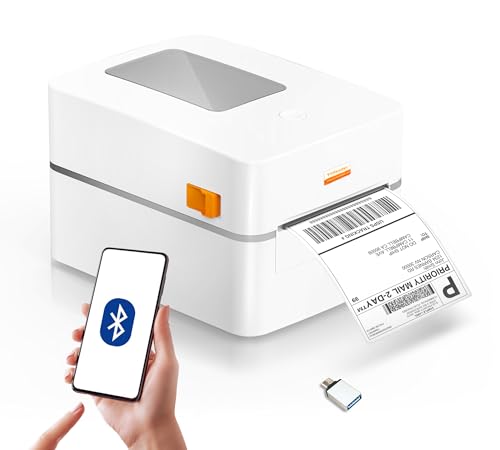What is a Label Printer and How Does It Work?
Understanding Label Printers
A label printer is a device designed specifically to print labels, often used in homes, offices, and retail environments. Imagine you run a small bakery. With a label printer, you can quickly create labels for your jars of jam or bottles of vinegar, clearly marking ingredients or expiry dates. The printer uses various methods, such as thermal or inkjet printing, to apply text and images directly onto adhesive-backed materials, allowing you to easily peel and stick labels wherever needed.
How Label Printers Operate
Label printers turn your digital designs into physical labels. For instance, if you design a label on your computer using special software, the printer receives this information via USB, Bluetooth, or Wi-Fi. Most operation involves feeding a roll of label stock through the printer, which then heats elements on the printhead to transfer ink onto the labels or directly onto thermal paper. This process enables fast and efficient label production, suitable for bulk tasks like labelling products for a small business.
Choosing the Right Label Printer for Your Needs
Assessing Your Requirements
When we think about buying a label printer, it’s vital to consider our specific needs. For example, if you require labels or stickers for shipping purposes, a printer that can handle larger formats and various materials may be required. Conversely, if we only want to print address labels for personal use, a compact desktop model will likely suffice.
Portability and Connectivity
Another factor to consider is portability. If we need to print labels on the go, a handheld or battery-operated printer could be the ideal option. Connectivity is also crucial; some printers connect via USB while others allow wireless printing from smartphones or tablets through Bluetooth or Wi-Fi, adding significant ease to our workflow.
Top Features to Consider When Buying a Label Printer
Print Quality and Resolution
The print quality should be among our top priorities when selecting a label printer. If we need vivid colours and sharp text for branding purposes, ensuring the printer has a high DPI (dots per inch) resolution is essential. A printer with at least 300 DPI usually suffices for most applications, providing professional-looking results.
Label Size and Material Compatibility
It is equally important to determine the range of label sizes a printer can accommodate. Many printers offer versatility in label widths, from small address labels to broader product labels. Furthermore, consider the types of label materials we plan to use. Some printers are compatible with thermal, vinyl, or even fabric label stock, providing us the flexibility to choose the best material for our needs.
Speed of Printing
The printing speed is another feature worth considering. If we intend to print a large batch of labels, a printer that can produce labels at a rapid rate, typically measured in inches per second, can save valuable time in our operations. Consider a printer that offers a balance between speed and quality to ensure our label production meets our timeline.
How to Get Started: Setting Up Your New Label Printer
Unboxing and Initial Setup
Once we’ve purchased our label printer, it’s time for the fun part: setting it up. Begin by unboxing the printer, removing any protective materials, and making sure all accessories are accounted for, such as power cords and ink cartridges if required. An easy setup involves attaching the printer to our computer or mobile device, following the instructions in the manual.
Installing Software and Drivers
After connecting, we usually need to install specific software or drivers that came with the printer. This software is essential as it enables us to create labels easily. Dust off our computer or smartphone, fire up the installation, and follow the prompts to ensure everything is configured correctly.
Maintaining Your Label Printer for Long-Lasting Use
Regular Cleaning and Care
To keep our label printer in optimal condition, regular cleaning should be part of our routine. Dust and residue can build up on the printhead and rollers, impacting performance. Simply use a soft, lint-free cloth to wipe down the exterior and check inside the printer for any debris, using a brush or compressed air for hard-to-reach places.
Replacing Consumables
Consumables such as ink cartridges and label rolls will eventually need replacing, so keeping an inventory can help us avoid any interruptions during our label-printing tasks. Monitor when the colours start to fade or if the printer struggles to perform, as these can be signs that it’s time to refresh our supply.






























